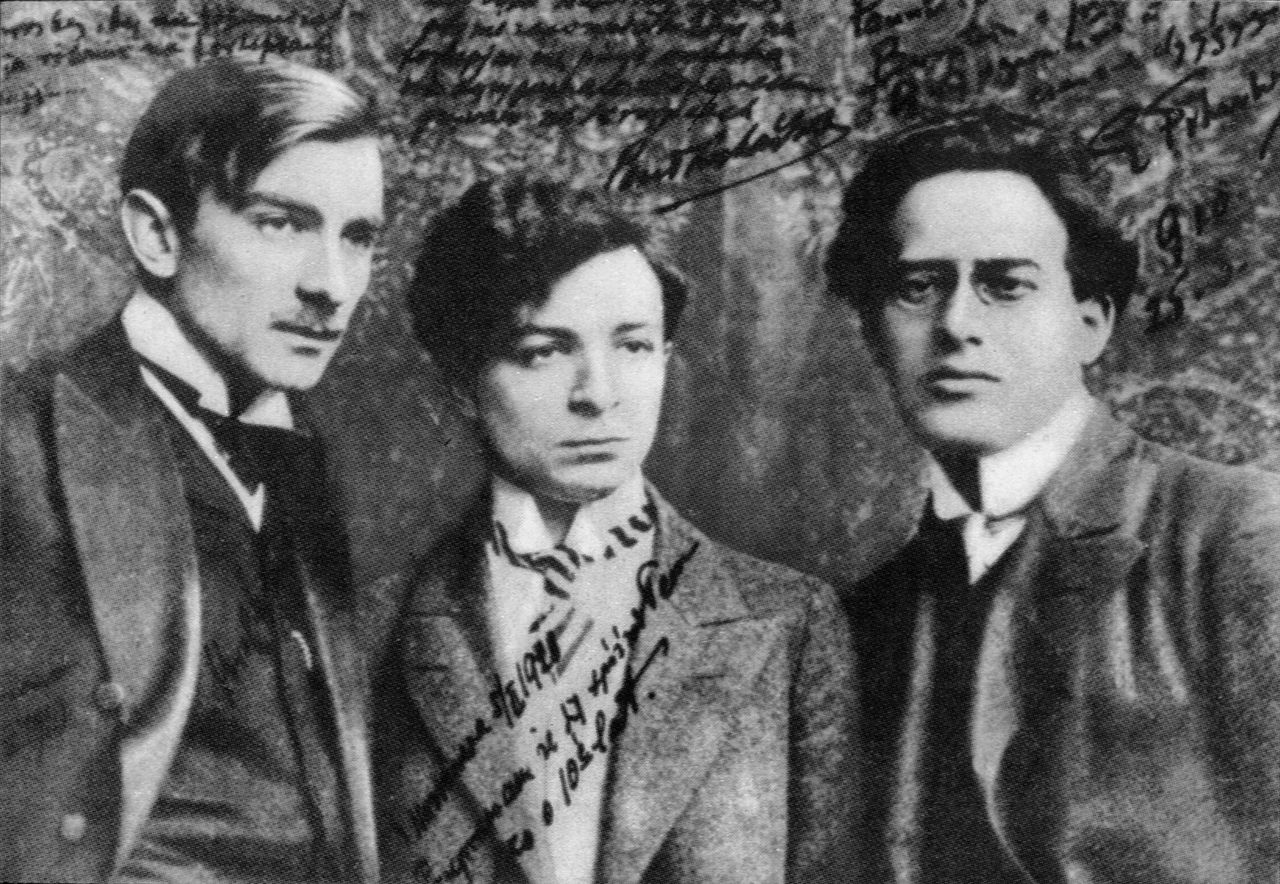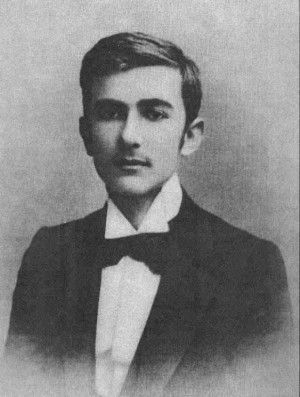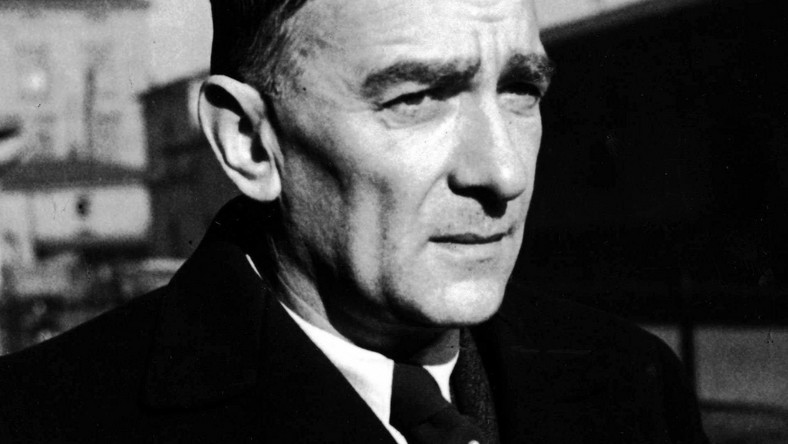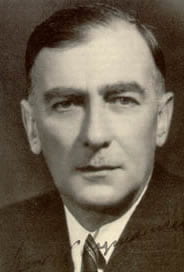


b. 1882, Tymoszówka – d. 1937, Lausanne
Biography
Karol Szymanowski was born on October 3, 1882, on his family’s estate in Tymoszówka (now Ukraine). He was raised in a strong musicial, conservative family. Szymanowski began his music education with his father and continued at Neuhaus’s school in Elisavetgrad. In 1901 he went to Warsaw for more regular studies in music. From that year until 1904 he had private lessons with Zawirski for harmony and with Zygmunt Noskowski for counterpoint and composition. His creative output may be divided into four periods: early career, the World War I period, the 1920s, and 1930s. Early musical studies and activities in Warsaw date from 1901 until 1906 and include membership in a Society for Performing Contemporary Polish Music. During the years 1907-14 Szymanowski travelled extensively in Germany, Italy, France and England. In the years 1914 – 1917 he remained in Tymoszówka where he studied and composed with a renewed intensity. Unfortunately, in the fall of 1917 the Szymanowski’s house was destroyed and the family moved to Elisavetgrad. For nearly two years Szymanowski exchanged music for literature. He wrote a long novel, Efebos, which was lost in the Warsaw fires of 1939. Towards the end of 1919 he settled in Warsaw. Together with his friends, violinist Pawel Kochański and pianist Artur Rubinstein, Szymanowski twice travelled to the USA by way of London in 1920-21, giving concerts that met with critical and popular success. During the years 1924-26 Szymanowski received increasing recognition at home, despite the opposition of conservative sections of musical society. He spent a lot of time in Paris, chiefly for the many performances of his compositions.
Szymanowski received many high distinctions and was appointed to numerous international societies. In 1927 he was offered the directorships of the conservatories of Cairo and Warsaw. He chose Warsaw, despite the much better terms of Egyptian invitation and the opportunity of living in a climate which would have benefited his health, threatened since early childhood by tuberculosis. Szymanowski saw the Warsaw post as an opportunity to re-invigorate Polish music education, neglected during the years of partition, and to form a new generation of Polish composers. The years 1927-29 were entirely taken up by his campaign to established a new model of training, to open wide horizons to the young and to provide them with a thorough knowledge of composition. He achieved his aim, but at a very high cost: these were years of creative stagnation and of great physical and nervous stress, which led to a serious crisis in his health. His pulmonary tuberculosis advanced seriously and he had to give up his duties and go to a sanatorium in Davos. There he remained for almost a year, writing a treatise, “The educational role of musical culture in society.” The next two years (1930-31) were the period of his greatest stability, success and prosperity. He rented a house “Atma” in Zakopane. In 1930 he was appointed rector of the Warsaw Academy of Music and made an honorary doctor of Kraków’s Jagiellonian University. He was elected to the highly select group of honorary members of the ISCM. The Stabat Mater brought him widespread renown, and in 1932 the opera King Roger was presented in Prague. In April 1936 he experienced his greatest popular success when his ballet Harnasie, which had received its premiere in Prague in the previous year, was presented at the Paris Opera and was highly praised by critics and public alike. He died shortly after a move to a sanatorium in Lausanne on 24 March, 1937. https://polishmusic.usc.edu/research/composers/karol-szymanowski/
The fourth and final symphony by Polish composer and pianist Karol Szymanowski (1882-1937), a work where the piano plays a prominent role. The bright first movement is in a loose sonata form. The second features solos for violin and flute with piano accompaniment, followed by a restatement of the main theme from the previous movement. This leads directly into the last movement oberek, a traditional Polish round-dance similar to the rondeau in form. In the middle of the movement, there is an episode for the piano that resembles a mazurka. Overall, the composer described this work as something in between a symphony and a concerto for piano. Pianist: Tadeusz Żmudziński Conductor: Karol Stryja Polish State Philharmonic Orchestra, Katowice
Serdecznie zapraszamy Państwa na retransmisję koncertu Karol Szymanowski Quartet, który odbył się 2 sierpnia 2020 w Europejskim Centrum Muzyki Krzysztofa Pendereckiego w Lusławicach. Realizacja wideo: Maciej Stasiński & Grzegorz Kućmierz Dźwięk: Bartek Staniak Dofinansowano ze środków Ministra Kultury i Dziedzictwa Narodowego pochodzących z Funduszu Promocji Kultury w ramach programu „Muzyka”, realizowanego przez Instytut Muzyki i Tańca
Karol Szymanowski’s Third Symphony “The Song of the Night (Piesn o Nocy) performed by Antoni Wit and Ryszard Minkiewicz, the best version of probably the best symphony of all the 20th century IMO. The website karolszymanowski.pl about the Symphony: In the summer of 1916, after two years of working on it irregularly (interrupted mainly during 1915 by ideas for new compositions), Szymanowski finished his Symphony No. 3 “Song of the Night” op. 27 for solo tenor, mixed choir and orchestra. The author of the text is the thirteenth-century Persian poet, mystic and Neoplatonist, Jallal-al-din Rumi. The Polish translation by Tadeusz Miciński (of the poem Song of the Night (based on a German translation) appeared in 1905 in the Warsaw monthly “Chimera”, devoted to literature and art. This mystical-pantheistic text of an Eastern poet must have seemed to Szymanowski to provide the ideal subject in a period of the birth of a new style, as well as providing support for his aesthetic needs and long-cherished desire to write a solid poem-symphony, which would give vent to his tendencies toward expression full of ardour and ecstatic raptures. The vision of “this night”, which brings with it the great revelation, illuminating the mystery of God and Being, the rapture and dazzlement which accompany it, the feeling of the extraordinary, all this provided opportunity and stimulus to create music of exceptional emotional power, reaching a state of ecstasy; at the same time this music was new, strange, uncommon, fantastic, far-removed from the old conventions and even — in its mysterious depth and mood — unique and unrepeatable. At the same time, the beauty of the starry sky and universe being extolled in the poem added a physical dimension to the mystical thrill, which might have corresponded to the very sensual character of Szymanowski’s expression and the modern colour of his music. Finally, using a work by a Persian poet gave the composer a reason for introducing oriental accents, which attracted him at that time, such as characteristic melodic phrases or the sumptuousness of the ornamental patterns, which can at times be heard in the orchestra. Melody plays an important part in this work, and Szymanowski exhibits great inventiveness in this area — above all in the widely stretched violin phrases in high registers, flowing imaginatively and filled with strong emotion, their interval structure (similar to Songs of Hafiz) possibly bringing associations with some original ephemeral scales which do not stabilise; of greater importance, however, are certain distinctive and recurring motifs. These melodies — exceptionally beautiful, each one different, lyrically songful and new in structure — are contrasted with others — simpler, compact and forceful phrases made up of a few notes; through habit we perceive them tonally and attempt to refer mentally to a particular tonality which, however, does not reveal itself; what is heard instead is the repetition of certain recurrent, sparse-sounding motifs, which creates an individual expressive effect. Paintings: Edvard Munch: Moonlight Gustav Klimt: Bewegtes Wasser Vassili Kandinsky: Composition VI Tomb of the poet Hafez in Iran René Magritte: L’Heureux Donateur Gustav Klimt: Danae Bernini: The Ecstasy of Saint Teresa Gustav Klimt: Die Hoffnung II Caspar David Friedrich: Der Träumer Vincent van Gogh: La nuit étoilée Caspar David Friedrich: Vision der Christlichen Kiche Edvard Munch: The Sun

